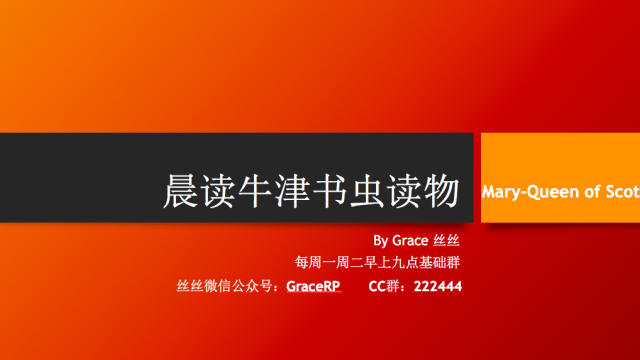在家學(xué)習(xí)時間的差異性
作者:Matt Easterbrook
來源:Inequalities in time spent home learning
2020-07-18 09:00
Inequalities in time spent home learning
在家學(xué)習(xí)時間的差異性
How much home learning are pupils doing? How does this vary by pupil and family characteristics?
學(xué)生們在家里學(xué)了多少東西?在學(xué)生和家庭特征上會有什么不同呢?
Executive Summary
摘要
Unsurprisingly, our analyses suggest that children are spending far less time on school-work than they would be if they were in school. Of special concern is that they also show marked differences in the time that children are spending on home learning depending on whether they are primary or secondary pupils, eligible for free school meals, boys or girls, the children of graduates, and how financially comfortable their household is. Our results imply that the education of specific groups of pupils is likely to be particularly disrupted by school closures, and that these groups are likely to need additional support to avoid any long-term negative impact of the school closures on their educational outcomes.?
不出所料,我們的分析表明,孩子們在家花在功課上的時間比他們在學(xué)校里花的時間要少得多。特別令人關(guān)注的是,孩子在家學(xué)習(xí)時花費的時間有明顯的差異,取決于他們是小學(xué)生還是中學(xué)生,是否有資格享受免費學(xué)校餐,是男孩還是女孩,是否是高等教育背景父母的孩子,以及家庭經(jīng)濟狀況如何。結(jié)果表明,特定學(xué)生群體的教育可能特別受到學(xué)校暫停上課的干擾,這些群體可能需要額外的支持,以避免學(xué)校關(guān)停對其教育結(jié)果產(chǎn)生的長期的負(fù)面影響。
These results are based on analyses of responses between 5th May and 30th June to an online survey from 2710 parents of school-aged children in the UK. 1694 parents responded about a child in primary school and 1016 about a child in secondary school. The results are based primarily on parents’ responses to the question “How much time did your child spend on their schoolwork during an average day at home in the last two weeks?”?
這些結(jié)果是基于對5月5日至6月30日對英國2710名學(xué)齡兒童家長的在線調(diào)查回復(fù)的分析得出的。1694名家長給出了小學(xué)學(xué)生的情況,1016名家長給出了中學(xué)學(xué)生的情況。調(diào)查結(jié)果主要基于家長對“在過去兩周內(nèi),您的孩子平均每天在家中花多少時間做作業(yè)?”的回答。
Results
結(jié)果
Overall time spent on home learning for primary and secondary school pupils.
中小學(xué)生用于家庭學(xué)習(xí)的總時間。
47% of primary school pupils spend 1-3 hours a day home learning, with 28% spending just one hour or less.?
47%的小學(xué)生每天在家學(xué)習(xí)1-3小時,28%的小學(xué)生每天只花1小時或更少的時間學(xué)習(xí)。
44% of secondary school pupils spend 2-4 hours a day on home learning, with 16% spending one hour or less.
44%的中學(xué)生每天在家學(xué)習(xí)2-4個小時,16%的中學(xué)生每天只花1小時或更少的時間。
12% of primary school pupils and 10% of secondary pupils are spending just 30 minutes or less home learning a day.
12%的小學(xué)生和10%的中學(xué)生每天在家學(xué)習(xí)的時間僅30分鐘或更少。
Inequalities by gender.
性別帶來的差異。
31% of boys and 24% of girls at primary school are doing less than an hour a day of home learning. 23% of boys and 28% of girls are doing three hours or more.
小學(xué)中31%的男孩和24%的女孩每天在家學(xué)習(xí)的時間少于1小時。23%的男孩和28%的女孩在家學(xué)習(xí)3小時或更長時間。
16% of boys and 13% of girls at secondary school are doing one hour or less, and 43% of boys and 50% of girls are doing three hours or more.?
在中學(xué),16%的男生和13%的女生學(xué)習(xí)時間小于等于1小時,43%的男孩和50%的女孩在家學(xué)習(xí)3小時或更長時間。
Inequalities between key worker and non-key worker parents.
核心員工和非核心員工父母帶來的差異。
28% of primary school pupils with at least one parent who is a key worker are doing one hour or less of home learning a day, compared to 25% of pupils whose parents are not key workers.?
父母中至少有一人是核心員工的小學(xué)生中,28%的人每天在家學(xué)習(xí)的時間不超過一個小時,相比之下,父母不是核心員工的小學(xué)生中,這一比例為25%。
Primary school pupils with at least one parent who is a key worker are less likely to be doing three hours or more of home learning a day (21%), compared to those whose parents are not key workers (30%).?
父母中至少有一人是核心員工的小學(xué)生與父母均不是核心員工的小學(xué)生相比,每天在家學(xué)習(xí)3小時或更長時間的可能性較小(占比分別為21%與30%)。
These differences are small for secondary school pupils.?
對于中學(xué)生來說,這種差異很小。
Inequalities by pupils’ eligibility for free school meals.
學(xué)生是否有資格享受免費學(xué)校餐食帶來的差異。
36% of primary school pupils who are eligible for free school meals spend one hour or less a day on home learning, compared to 25% of pupils not eligible.?
有資格享受免費校餐的小學(xué)生中,36%的人每天在家學(xué)習(xí)的時間不超過一小時,而不符合條件的小學(xué)生中,這一比例為25%。
25% of secondary school pupils who are eligible for free school meals spend one hour or less a day on home learning, compared to just 13.5% of pupils not eligible.
有資格享受免費學(xué)校餐的中學(xué)生中,有25%的人每天花在家里學(xué)習(xí)的時間不超過一個小時,而不符合條件的學(xué)生中,這一比例僅為13.5%。
These figures suggest that home learning may exacerbate the existing attainment gap between pupils eligible for free school meals and those not eligible, and that the increase in the gap caused by the school closures may be larger in secondary schools than primary schools.
這些數(shù)字顯示,在家中學(xué)習(xí)可能會加劇現(xiàn)有的有無資格享用免費校餐的學(xué)生之間的成績差距,而中學(xué)中因?qū)W校停課而導(dǎo)致的差距加大較小學(xué)更嚴(yán)重。
Inequalities by family financial situation.
家庭經(jīng)濟狀況帶來的差異。
There are inequalities based on parents’ self-reported financial situation, with pupils of parents who are financially comfortable tending to engaging in more home learning than pupils whose parents are financially struggling. However, these results are quite complex and not always linear.?
基于父母自我報告的經(jīng)濟狀況的不等,父母經(jīng)濟較好的學(xué)生比父母經(jīng)濟困難的學(xué)生傾向于更多地在家學(xué)習(xí)。然而,這些結(jié)果相當(dāng)復(fù)雜,并不總是線性的。
Inequalities between graduate and non-graduate parents.
研究生和非研究生父母帶來的差異。
33% of primary pupils with non-graduate parents are engaging in one hour or less of home learning a day, compared to 21% of pupils with at least one parent who is a graduate. 18% of children of non-graduates are doing three hours or more a day, compared with 29% of children of graduates.
父母為非研究生的小學(xué)生中,33%的小學(xué)生每天在家學(xué)習(xí)一小時或更少時間,而至少有一名父母是研究生的小學(xué)生中,這一比例為21%。非研究生父母的孩子中,有18%的小學(xué)生每天學(xué)習(xí)三個小時或更長時間,而在父母是研究生的小學(xué)生中這一比例為29%。
25% of secondary pupils with non-graduate parents are doing one hour or less of home learning a day, compared to 11.5% for pupils with at least one parent who is a graduate. 36% of children of non-graduates are doing three hours or more a day, compared with 51.5% of children of graduates.
父母為非研究生父母的中學(xué)生中,有25%的人每天在家學(xué)習(xí)一小時或更短時間,而至少有一名父母是研究生的中學(xué)生中,這一比例為11.5%。非畢業(yè)生的孩子中,有36%的中學(xué)生每天學(xué)習(xí)三個小時或更長時間,而在父母是研究生的中學(xué)生中這一比例為51.5%。
翻譯:MS小冰晶
- 相關(guān)熱點:
- 英語翻譯
- 四六級應(yīng)試寶典
- 英語考試時間











